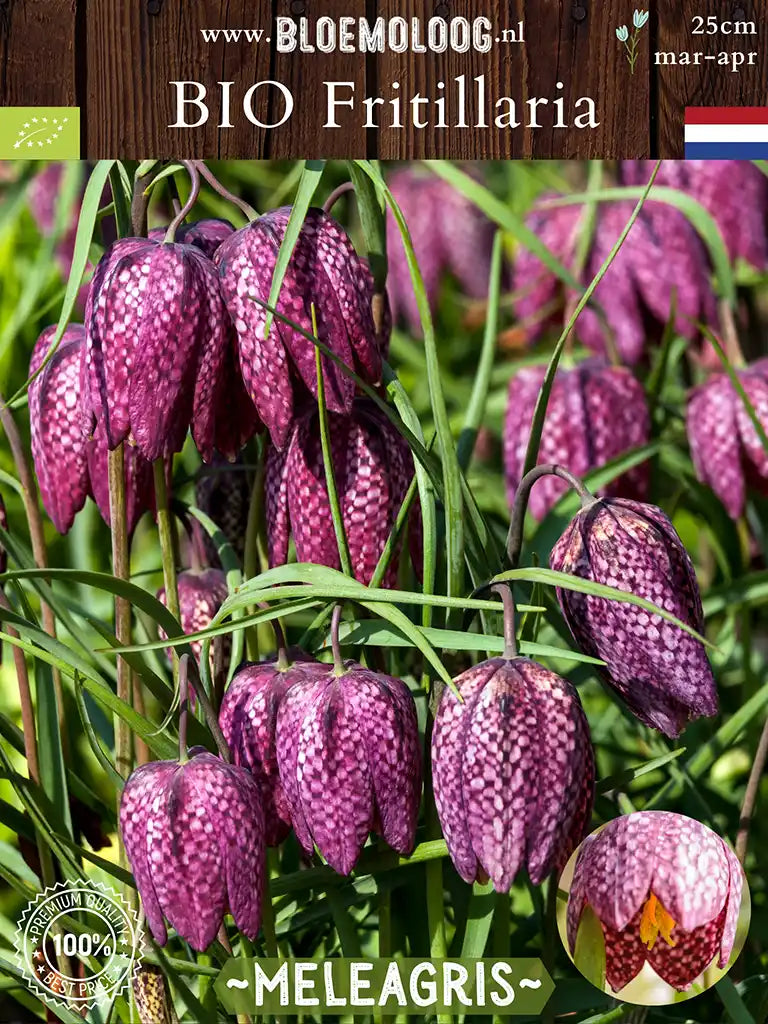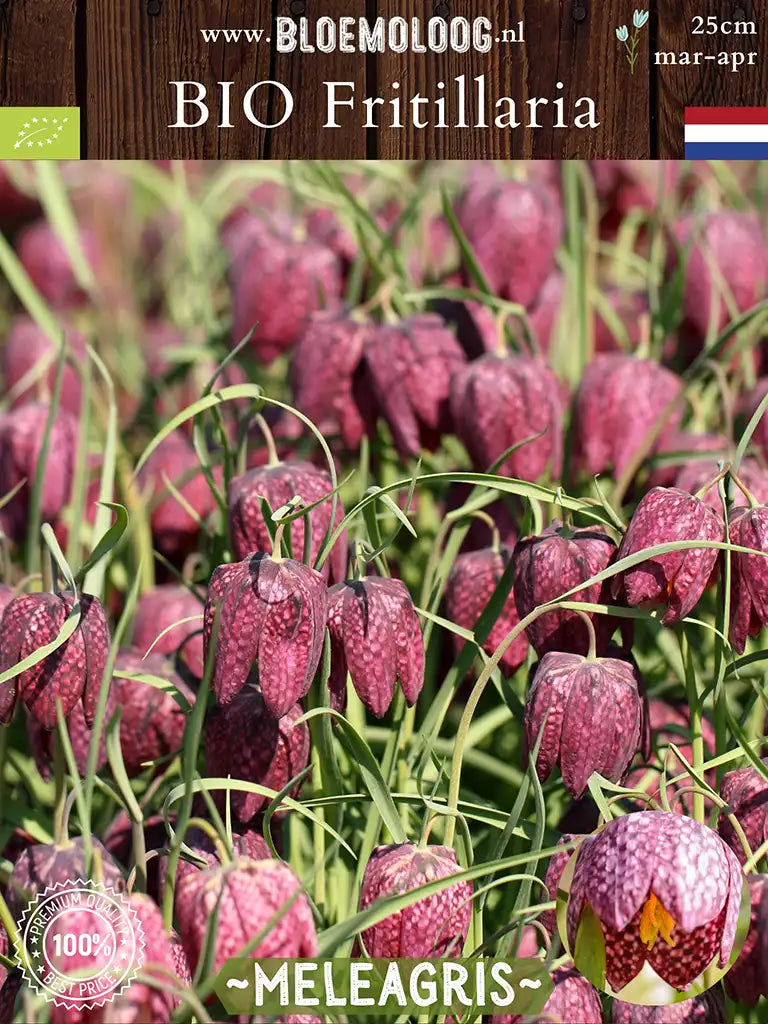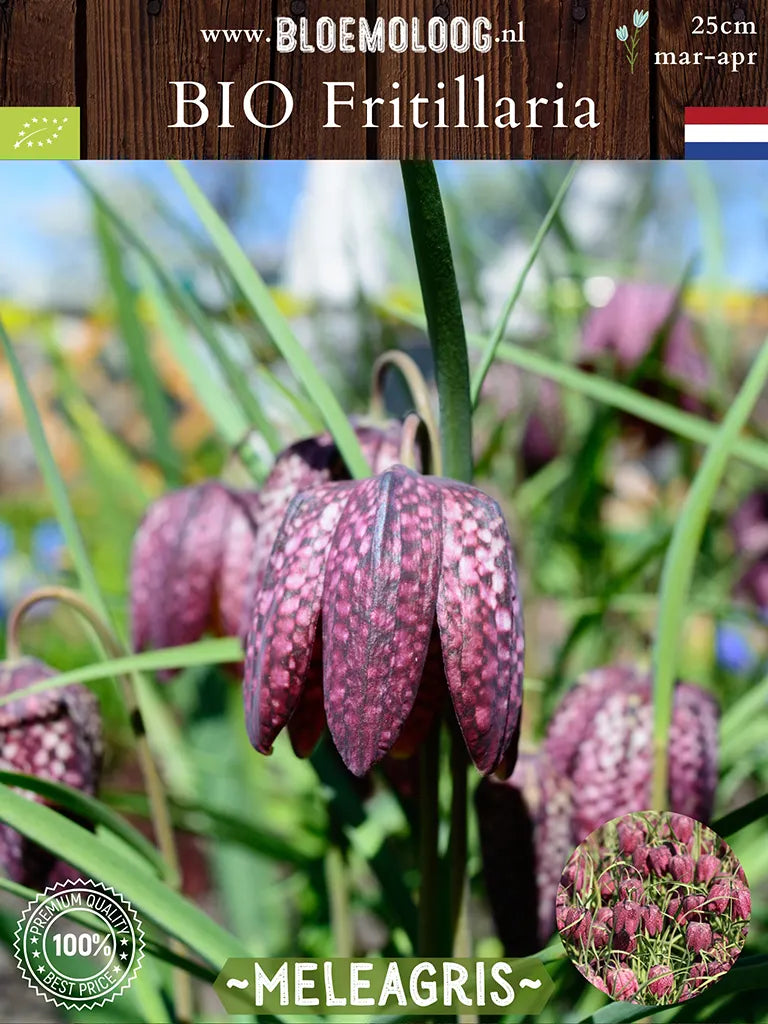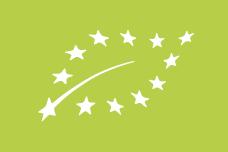Bloemoloog
Organic Fritillaria 'Meleagris' - Chess flower | 10 pcs.
Organic Fritillaria 'Meleagris' - Chess flower | 10 pcs.
Estimated Shipping Widget will be displayed here!
Couldn't load pickup availability
Organic Snake's Head Fritillary
The Fritillaria 'Meleagris', also known as the chess flower, snake's head fritillary or guinea hen flower, gets its name from the striking resemblance of its purple checkered flowers. The 5-centimeter wide bell-shaped flowers hang from a flower stem that grows to about 25 centimeters tall. It blooms early in spring, coinciding with the return of lapwings to the fields. In Germany, the Fritillaria 'Meleagris' is known as the 'Schachbrettblume', which means 'chessboard flower', referring to the checkered pattern on its petals.
The Fritillaria 'Meleagris' is a fascinating flower with rich symbolism and meaning. Its unique floral pattern and early blooming time make it a popular choice in gardens and flower beds.
How, Where, and When to Plant Snake's Head Fritillary Bulbs?
The snake's head fritillary bulb requires a cold period in winter and should therefore be planted between September and January. It can be planted in any fertile garden soil and even thrives in slightly wetter areas, but the soil should not be too wet to avoid root rot. Ensure good drainage, especially during wet seasons. Plant it in full sun or partial shade. Place the bulbs in groups in grass, borders, under trees or shrubs, or in pots. In the right location, they are suitable for naturalizing and will return faithfully each year.
Tip: Plant them in groups of at least 10 bulbs for a stunning effect.
Care Instructions
Water regularly during the growing period, especially when the plant is actively growing and blooming. Ensure the soil remains evenly moist, but avoid overwatering. Apply a layer of mulch around the plant to retain soil moisture and reduce weed growth. However, keep in mind that the bulb needs rest periods, so avoid thick mulch around the bulb during dormancy. In early spring, before growth begins, apply a balanced fertilizer to provide the plant with nutrients. For organic potting soil, plant food, and other soil enhancers, we recommend Bio Kultura !
The snake's head fritillary is suitable for naturalizing in slightly wetter areas. We recommend planting them in large groups close together for the best effect. Suitable for pots, gardens, and lawns.
Plant them immediately after delivery to prevent the bulbs from drying out. Inside the bell-shaped flowers, there is plenty of nectar, which provides an excellent food source for bees and other pollinators early in the year.
History of the Snake's Head Fritillary
The snake's head fritillary is native to parts of Europe, including Scandinavia, Great Britain, France, and the Balkans. In the Netherlands and Belgium, the plant is originally rare and mainly grows in moist, calcareous grasslands. It is one of the few wildflowers in the Netherlands with a protected status. Originally, it was found in the river basins of rivers like the IJssel, particularly around Zwolle and Deventer, where it is also known as the "Zwolle tulip".
Buy Organic Fritillaria 'Meleagris'
Skal NL-BIO-01 certified: 109459
Available to order from June '25!
Characteristics
| Flowering time: | March April |
| Planting time: |
From August |
| Planting depth: |
7 cm deep |
| Planting distance: | 7 cm apart |
| Height: |
25 cm high |
| Flower diameter: | 7cm wide |
| Location: |
Partial shade, sun |
| Soil: | Loam, sandy soil - slightly acidic to neutral |
| Winter hardiness: |
Very hardy |
| Propagation: | Good (naturalizes) |
| Origin: | Southeastern Europe |
| Family: | Liliaceae (lily family) |
| Colour: | Purple |
| Bulb size: | 5+ |
Other fritillaria species
NL-BIO-01
To share









